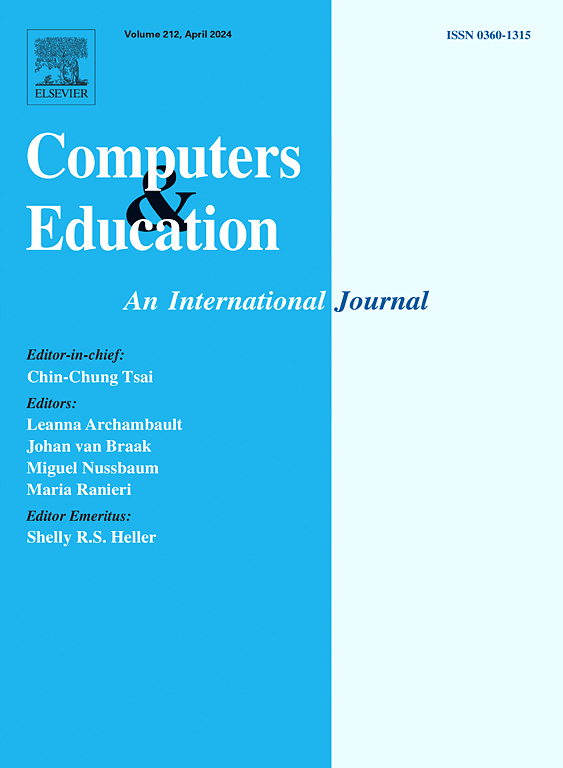Learning by explaining through digital devices: The role of the modality of oral explaining and extraversion
IF 10.5
1区 教育学
Q1 COMPUTER SCIENCE, INTERDISCIPLINARY APPLICATIONS
引用次数: 0
Abstract
Recent meta-analytical evidence shows that learning by explaining through digital devices (e.g., computers or tablets) is effective, but also reveals substantial heterogeneity in effect sizes. The present study was designed to shed light on two theoretically plausible moderators of such learning by digital explaining: the modality of (oral) explaining (audio + visual vs. audio only) and learners' level of the personality trait of extraversion. We conducted two experiments with university students (NExp1 = 114; NExp2 = 247). All students first watched a lecture video about the topic “social norms” and were then randomly assigned either to (a) explain the content of the lecture to fictitious peer students in a video message (i.e., audio + video), (b) to explain the content of the lecture to fictitious peer students in a voice message (i.e., audio), or (c) to restudy the slides of the lecture video. No substantial differences were found between learning by digital explaining in a video or voice message, but learners’ level of extraversion significantly moderated the benefits of learning by digital explaining regarding deep-level knowledge. Learners with low levels of extraversion benefitted more from learning by digital explaining, whereas learners with higher levels of extraversion benefitted more from restudy. Surprisingly, we furthermore found that restudy fostered surface-level knowledge compared to learning by digital explaining, whereas learning by digital explaining was superior (Experiment 1) or at least equivalent (Experiment 2) concerning deep-level knowledge. We conclude that the modality of oral explaining does not matter for the effects of digital explaining and that the personality trait of extraversion, at least under certain circumstances, can be a source for heterogeneous effects in learning by digital explaining.
通过数字设备进行解释学习:口头解释的情态和外向性的作用
最近的元分析证据表明,通过数字设备(如电脑或平板电脑)进行解释的学习是有效的,但也揭示了效应大小的巨大异质性。本研究旨在揭示数字解释学习的两个理论上合理的调节因素:(口头)解释的形式(视听vs音频)和学习者的外向性人格特质水平。我们对大学生进行了两次实验(NExp1 = 114;NExp2 = 247)。所有学生首先观看了一段关于“社会规范”主题的讲座视频,然后被随机分配(a)通过视频信息(即音频+视频)向虚构的同学解释讲座内容,(b)通过语音信息(即音频)向虚构的同学解释讲座内容,或(c)重新研究讲座视频的幻灯片。通过视频或语音信息进行数字讲解学习之间没有发现实质性差异,但学习者的外向性水平显著调节了通过数字讲解学习深层知识的益处。外倾性水平低的学习者从数字解释学习中获益更多,而外倾性水平高的学习者从重新学习中获益更多。令人惊讶的是,我们进一步发现,与数字解释学习相比,再学习培养了表层知识,而数字解释学习在深层知识方面优于(实验1)或至少相当(实验2)。我们的结论是,口头解释的方式对数字解释的效果无关,外向性的人格特质,至少在某些情况下,可以成为数字解释学习的异质效应的来源。
本文章由计算机程序翻译,如有差异,请以英文原文为准。
求助全文
约1分钟内获得全文
求助全文
来源期刊

Computers & Education
工程技术-计算机:跨学科应用
CiteScore
27.10
自引率
5.80%
发文量
204
审稿时长
42 days
期刊介绍:
Computers & Education seeks to advance understanding of how digital technology can improve education by publishing high-quality research that expands both theory and practice. The journal welcomes research papers exploring the pedagogical applications of digital technology, with a focus broad enough to appeal to the wider education community.
 求助内容:
求助内容: 应助结果提醒方式:
应助结果提醒方式:


